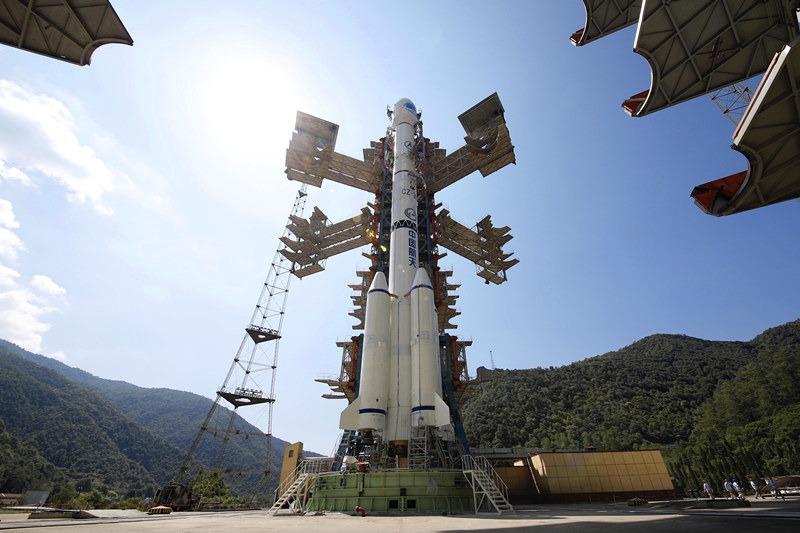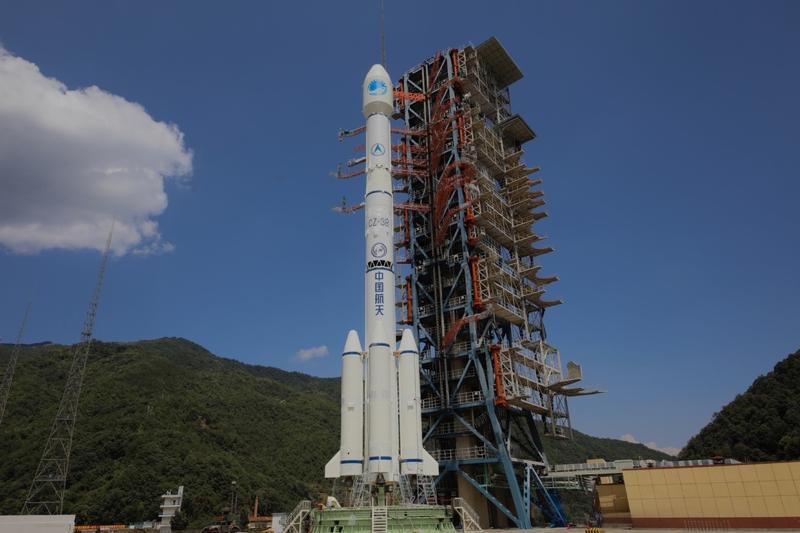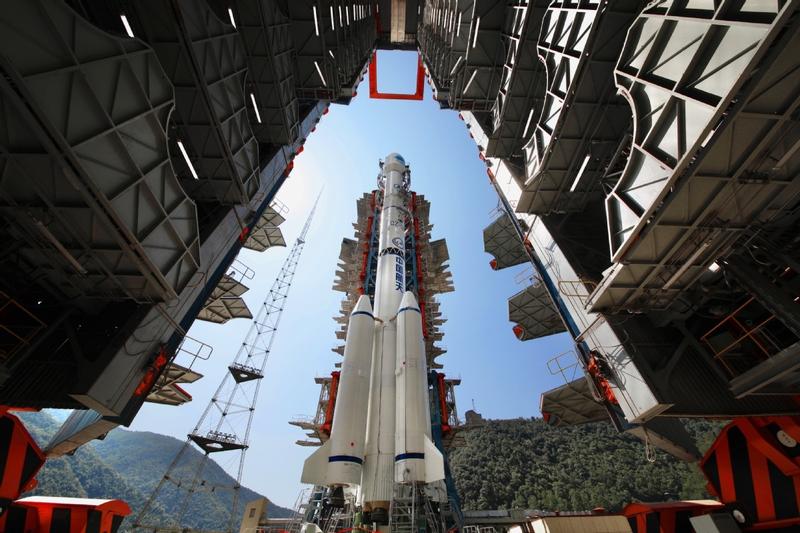 The Long March 3B carrier rocket is on the launch pad at the Xichang Satellite Launch Center in Southwest China's Sichuan province. (PHOTO / CHINA ACADEMY OF LAUNCH VEHICLE TECHNOLOGY)
The Long March 3B carrier rocket is on the launch pad at the Xichang Satellite Launch Center in Southwest China's Sichuan province. (PHOTO / CHINA ACADEMY OF LAUNCH VEHICLE TECHNOLOGY)
The final satellite to complete the third-generation network of China's Beidou Navigation Satellite System is ready for launch, the China Satellite Navigation Office said.
The spacecraft, the 59th in the Beidou family and 30th in the third-generation series, has undergone technical checks, propellant injection and prelaunch setting at the Xichang Satellite Launch Center in Sichuan province, the office said in a statement issued on Sunday afternoon, adding that the Long March 3B carrier rocket that will lift it to a geostationary orbit will soon be fueled up at the center.
The spacecraft will work with other Beidou satellites, allowing users around the globe to access high-accuracy navigation, positioning and timing services
The launch will take place in due course, it said.
The spacecraft will work with other Beidou satellites, allowing users around the globe to access high-accuracy navigation, positioning and timing services.
The launch will mark the completion of Beidou, the country's largest space-based system and one of four global navigation networks, along with the United States' GPS, Russia's GLONASS and the European Union's Galileo.
The satellite, which was transported to the Xichang center on April 4, was designed and made by the China Academy of Space Technology, a subsidiary of State-owned space conglomerate China Aerospace Science and Technology Corp.
The most recent Beidou launch, in March, transported the 58th Beidou satellite to a geostationary orbit.
All of the system's satellites have been launched from Xichang on Long March 3Bs.
 The Long March 3B carrier rocket is on the launch pad at the Xichang Satellite Launch Center in Southwest China's Sichuan province. (PHOTO / CHINA ACADEMY OF LAUNCH VEHICLE TECHNOLOGY)
The Long March 3B carrier rocket is on the launch pad at the Xichang Satellite Launch Center in Southwest China's Sichuan province. (PHOTO / CHINA ACADEMY OF LAUNCH VEHICLE TECHNOLOGY)
ALSO READ: Beidou system soon available worldwide
The drive to establish a domestically developed satellite network for navigation and positioning was initiated by Chinese scientists in 1983, and the country began research and development of its own space-based navigation and positioning system in 1994, aiming to mitigate its absolute reliance on foreign networks.
Since 2000, when the first Beidou satellite entered orbit, 58 satellites, including the first four experimental ones, have been launched, with some of them having retired.
More than 100,000 scientists, engineers and technicians from more than 300 domestic institutes and enterprises have been involved in Beidou's development and construction.
 The Long March 3B carrier rocket is on the launch pad at the Xichang Satellite Launch Center in Southwest China's Sichuan province. (PHOTO / CHINA ACADEMY OF LAUNCH VEHICLE TECHNOLOGY)
The Long March 3B carrier rocket is on the launch pad at the Xichang Satellite Launch Center in Southwest China's Sichuan province. (PHOTO / CHINA ACADEMY OF LAUNCH VEHICLE TECHNOLOGY)
Beidou began providing positioning, navigation, timing and messaging services to civilian users in China and other parts of the Asia-Pacific region in December 2012. At the end of 2018, Beidou started to provide global services.
There are 29 third-generation Beidou satellites in three types of orbit-24 in medium-Earth orbits, three in inclined geosynchronous satellite orbits and two in geostationary orbits.
There also are some second-generation Beidou satellites in operation offering regional services.
Compared with the second-generation satellites, the third-generation models feature higher accuracy and stability, a clearer signal and more state-of-the-art technologies such as inter-satellite links, satellite-based augmentation and global emergency search capability, designers said.
READ MORE: China to launch last satellite for BeiDou navigation system
According to statistics from the Global Navigation Satellite System and Location-Based Services Association of China, Beidou has been used in dozens of business and public sector fields in China, including transportation, electric power transmission, fisheries, mining and agriculture, and tens of millions of Beidou-based terminal devices have been sold and are in use.


